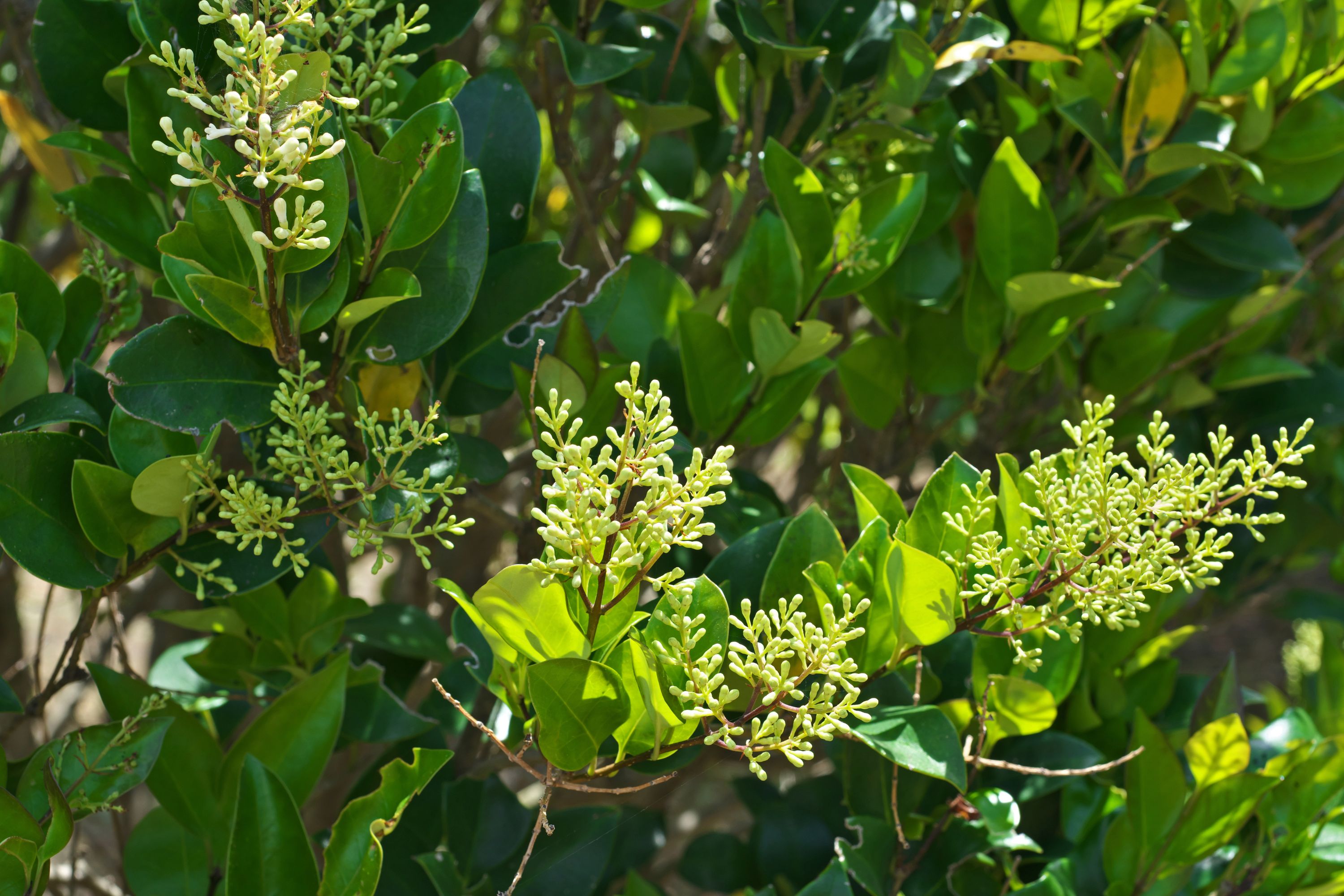Japanese privet
(Ligustrum japonicum)

Description
Ligustrum japonicum is a species of evergreen shrub that belongs to the olive family (Oleaceae). It is commonly known as Japanese privet, wax-leaf privet, or simply privet. Native to Japan, Korea, and China, Ligustrum japonicum is a popular ornamental plant that has been widely cultivated throughout the world. It is valued for its dense, glossy foliage, fragrant flowers, and attractive berries. In this article, we will discuss the botanical characteristics, growing conditions, uses, and potential problems associated with Ligustrum japonicum. Botanical Characteristics: Ligustrum japonicum is a medium-sized evergreen shrub that can grow up to 15 feet tall and 10 feet wide. It has a dense, compact habit with a rounded or oval shape. The leaves are glossy, dark green, and leathery, with an elliptical or oblong shape. They grow up to 4 inches long and 2 inches wide and are arranged in opposite pairs along the stems. Ligustrum japonicum produces small, white, fragrant flowers in late spring or early summer. The flowers are borne in dense, terminal panicles that can grow up to 8 inches long. Each flower has four petals and four stamens and is about ¼ inch in diameter. The flowers are followed by small, round, blue-black berries that are about ¼ inch in diameter. The berries are a valuable food source for birds. Growing Conditions: Ligustrum japonicum is a relatively easy plant to grow and maintain. It prefers full sun to partial shade and well-drained soil. It can tolerate a wide range of soil types, including clay, loam, and sand. However, it does not do well in wet or waterlogged soil. It is also tolerant of salt spray and air pollution, which makes it a good choice for coastal areas and urban environments. Ligustrum japonicum is hardy in USDA zones 7 to 10, which means it can tolerate winter temperatures as low as 0°F. It can be grown as a hedge, border, or specimen plant. It responds well to pruning and can be shaped into a variety of forms, including topiary. However, it should be noted that Ligustrum japonicum can be invasive in some regions, particularly in the southeastern United States. Uses: Ligustrum japonicum is a versatile plant that has many uses in the landscape. It is commonly used as a hedge or screen plant because of its dense foliage and fast growth rate. It can also be used as a border plant, a specimen plant, or a topiary. It is often planted in urban areas because of its tolerance of air pollution and salt spray. Ligustrum japonicum is also a popular bonsai plant. Its small leaves and compact habit make it well-suited for this art form. It can be trained into a variety of styles, including formal upright, informal upright, and cascade. In traditional Chinese medicine, Ligustrum japonicum is used as an herbal remedy for a variety of conditions, including fever, headache, and dizziness. The berries are also used to treat constipation and urinary tract infections. Potential Problems: Ligustrum japonicum is generally a hardy and disease-resistant plant. However, it can be susceptible to a few problems. The most common issue is scale insects, which can cause yellowing and premature dropping of leaves. Scale insects can be treated with horticultural oil or insecticidal soap. Ligustrum japonicum can also be susceptible to root rot if grown in wet or waterlogged soil. To prevent this, it is important to ensure good drainage and avoid overwatering.
Taxonomic tree:







